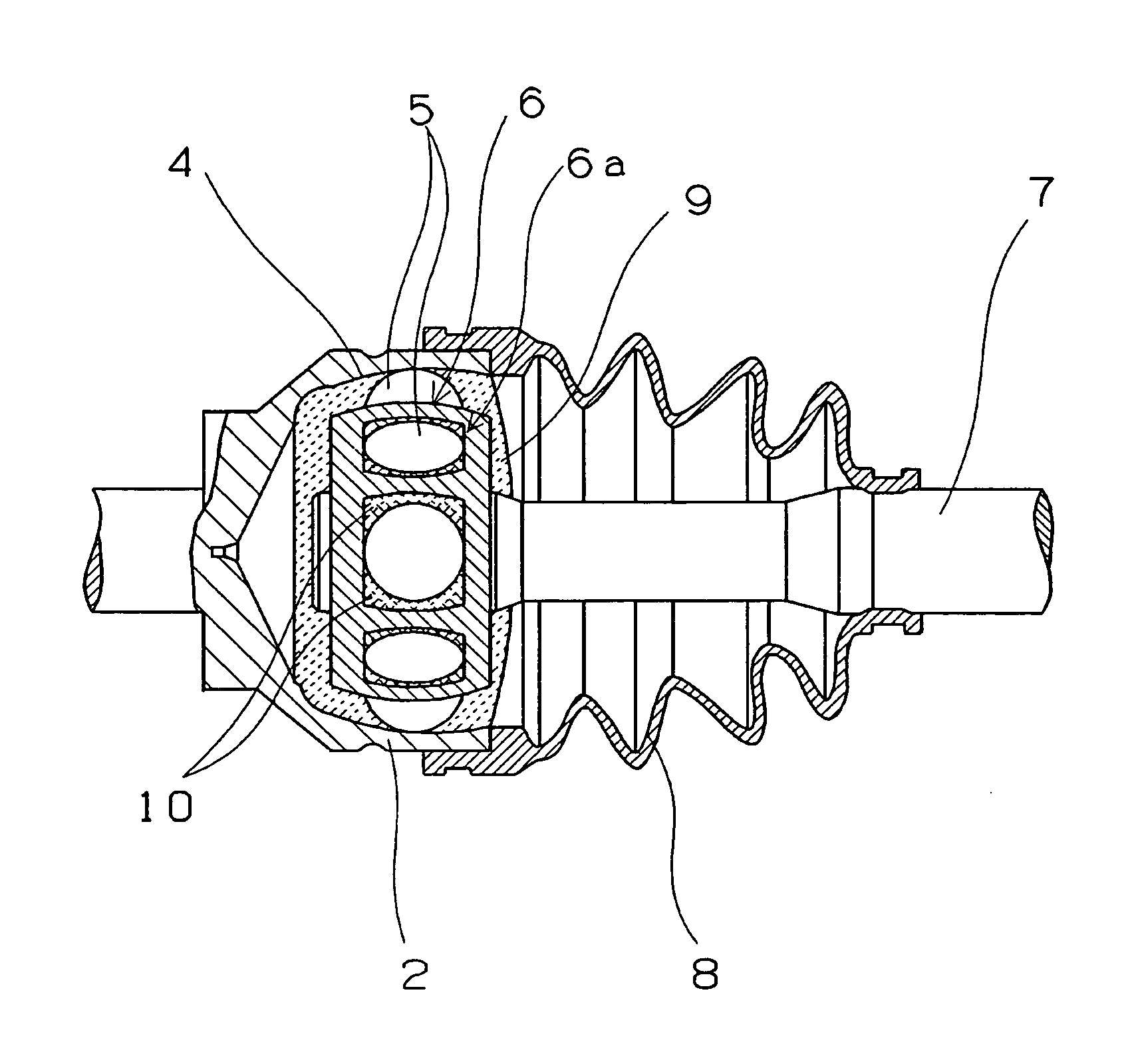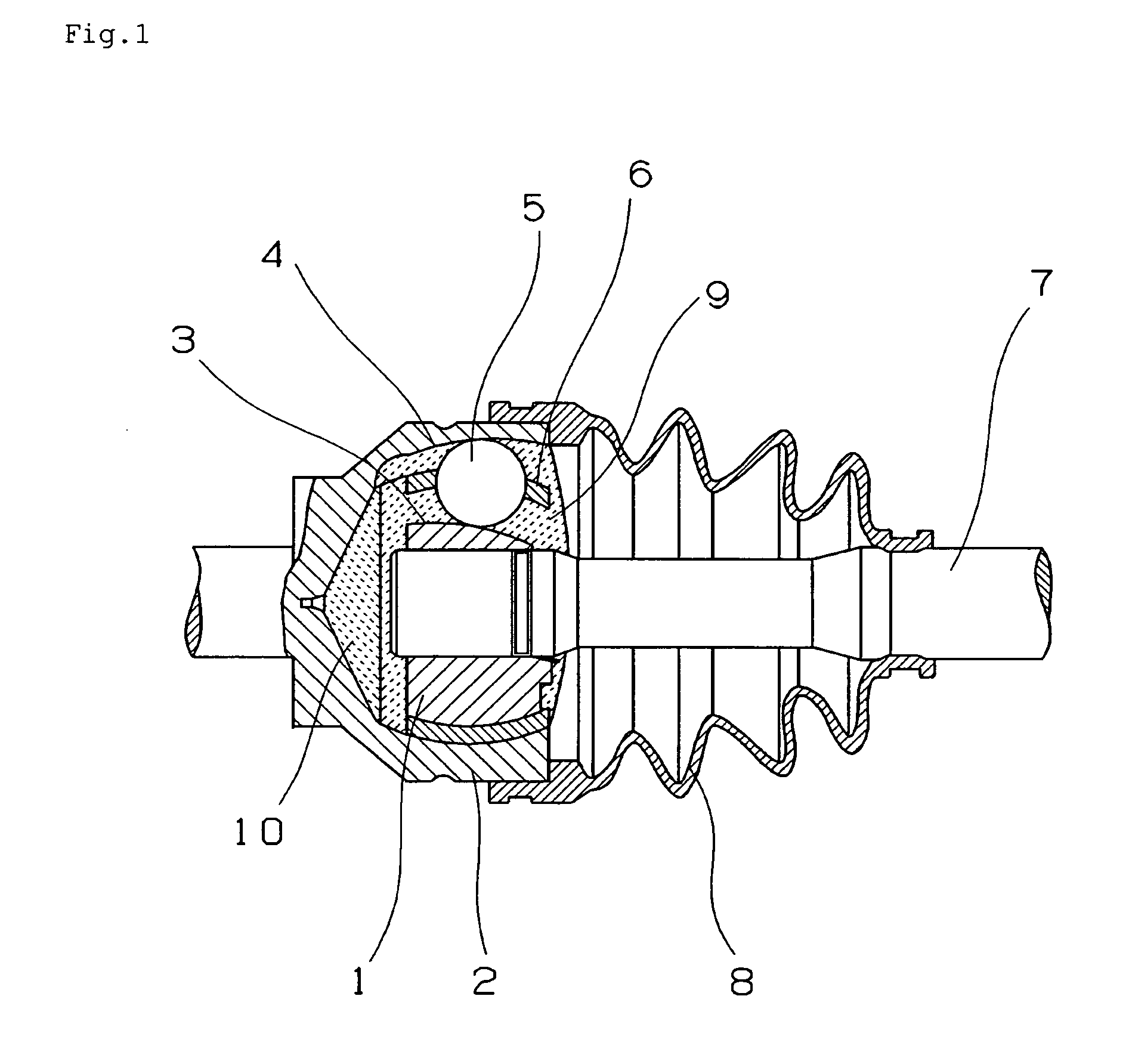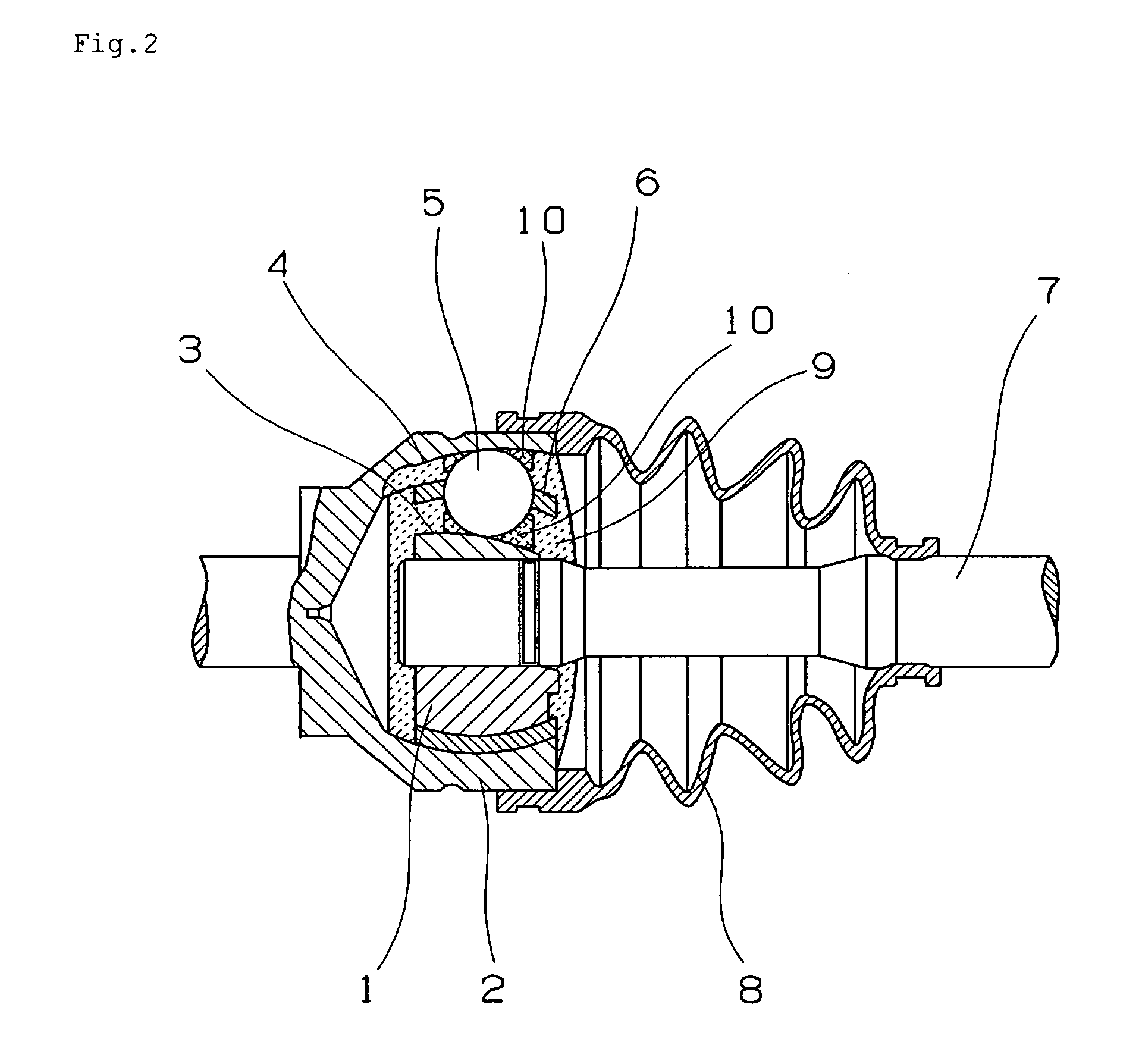Lubricating system and universal joints with the system
- Summary
- Abstract
- Description
- Claims
- Application Information
AI Technical Summary
Benefits of technology
Problems solved by technology
Method used
Image
Examples
examples
[0135]A grease A for auxiliary lubrication through a grease D for auxiliary lubrication used in examples and comparative examples described below were prepared by using methods described below. The penetration means a 60-time worked penetration measured in accordance with JIS K 2220 5.3.
[Grease A for Auxiliary Lubrication]
[0136]12.39 g of diphenylmethane-4,4-di-isocyanate and 10.61 g of p-toluidine were allowed to react with each other in 77 g of mineral oil (“turbine 100” produced by Nippon Oil Corporation). A formed diurea compound was uniformly dispersed to obtain the grease A for auxiliary lubrication. The amount of a thickener contained in the grease was 23 wt %. The measured penetration was 270.
[Grease B for Auxiliary Lubrication]
[0137]3.64 g of the diphenylmethane-4,4-di-isocyanate, 3.92 g of stearylamine, and 1.44 g of cyclohexylamine were allowed to react with each other in 91 g of the mineral oil (“turbine 100” produced by Nippon Oil Corporation). The formed diurea compoun...
examples 1 , 2
Examples 1, 2, and 5
[0140]Initially 3 g of the grease for auxiliary lubrication shown in table 1 was enclosed in the bottom portion of an outer member 2 of a fixed-type eight-ball joint sub-assembly (“EBJ82” produced by NTN corporation, outer diameter: 72.6 mm), shown in FIG. 1, which was constructed of the outer member 2, the inner member 1, the cage 6, and the steel ball 5 serving as the torque transmission member. Thereafter of the components shown in table 1, the components (a), (d), (e), and (i) were sufficiently mixed with one another at 80° C. After the component (b) which dissolved at 120° C. was added to the mixture of the components, all the components were rapidly mixed with one another. After the components (c) and (h) were supplied to the mixture finally, all the components were stirred. 18.0 g of the mixture of the components was enclosed inside the above-described joint sub-assembly in which the grease for the auxiliary lubrication was enclosed. A foaming reaction sta...
examples 3 , 4 and 6
Examples 3, 4 and 6
[0146]Initially 3 g of the grease for auxiliary lubrication shown in table 1 was enclosed at the bottom portion of the outer member of a fixed-type eight-ball joint sub-assembly (“EBJ82” produced by NTN corporation, outer diameter: 72.6 mm), shown in FIG. 1, which was constructed of the outer member 2, the inner member 1, the cage 6, and the steel ball 5 serving as the torque transmission member. After a silicone-based foam stabilizer, mineral oil, an amine catalyst, and water serving as a foaming agent were added to polyether polyol in the amounts (composition) shown in table 1, the mixture was heated at 90° C. and sufficiently stirred. After isocyanate was added to the mixture, the mixture was sufficiently stirred. Thereafter 16.0 g of the mixture was enclosed inside the above-described joint sub-assembly in which the grease for auxiliary lubrication was enclosed. A foaming reaction started in several seconds. After each foamed lubricant was left for 15 minutes ...
PUM
| Property | Measurement | Unit |
|---|---|---|
| Fraction | aaaaa | aaaaa |
| Ratio | aaaaa | aaaaa |
| Elasticity | aaaaa | aaaaa |
Abstract
Description
Claims
Application Information
 Login to View More
Login to View More - R&D Engineer
- R&D Manager
- IP Professional
- Industry Leading Data Capabilities
- Powerful AI technology
- Patent DNA Extraction
Browse by: Latest US Patents, China's latest patents, Technical Efficacy Thesaurus, Application Domain, Technology Topic, Popular Technical Reports.
© 2024 PatSnap. All rights reserved.Legal|Privacy policy|Modern Slavery Act Transparency Statement|Sitemap|About US| Contact US: help@patsnap.com










